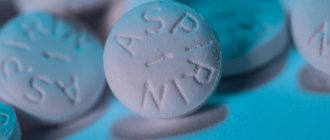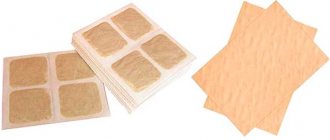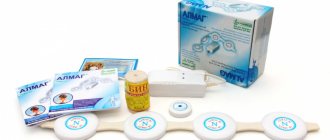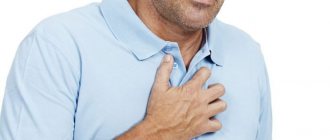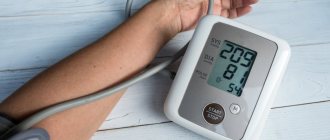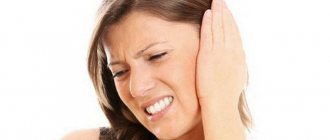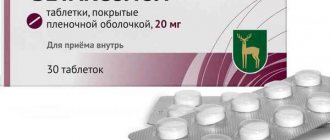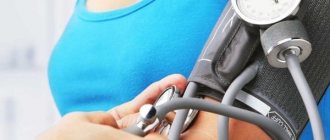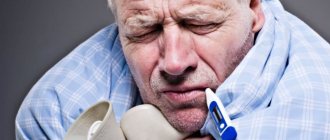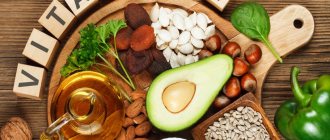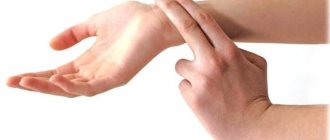Oriental medicine recommends using hijama for high blood pressure, distinguishing between dry and wet types of the procedure. In the first case, no incisions are made, which eliminates the appearance of blood. Official medicine is categorically against this method of regeneration and introduces a number of contraindications and restrictions on its use. It is important to ensure that the instruments are completely sterile and to be treated only by a specialist.
Benefits of bloodletting
Thanks to bloodletting, blood is renewed
Today, doctors use the method of bloodletting only in the treatment of hemochromatosis. This is a genetic disease associated with a disorder of iron metabolism in the body - its excessive accumulation in organs and tissues. However, doctors note that therapeutic bloodletting is also useful for other pathologies. These include:
- stagnation of blood in the systemic circulation - heart failure of the right gastric type;
- pulmonary edema;
- poisoning with toxic substances;
- with high blood pressure.
The medicinal effect is achieved due to partial renewal of the blood. After “blood loss,” the body tries to replenish the lack of fluid in the bloodstream. To restore the missing volume, the body takes water from the cells, thinning the blood.
Together with water, toxic substances are removed from organs and tissues, which within a few days leave the body with metabolic products, for example, urine. Blood loss also mobilizes the bone marrow, which produces a new portion of young red blood cells. Thus, the cells of the whole body are rejuvenated.
Some techniques differ not only in the collection of a non-life-threatening amount of blood, but also in the impact on certain nerve endings, which has an additional therapeutic effect. One type of bloodletting is hirudotherapy - treatment with leeches. In one session, bloodsuckers drink up to 200 mg of blood.
What's the point?
Residents of eastern countries have been practicing hijama (bloodletting) since ancient times. Muslims claim that by ridding a person of excess, stagnant blood, many ailments can be prevented. When lymph stagnation is removed, the blood is renewed, which becomes clogged due to poor nutrition, stress and lack of exercise. Blockage of blood vessels provokes a violation of blood pressure, hijama returns the patient to normal condition with high blood pressure.
The technique is carried out using small incisions, mainly on the neck or head, the points of which are determined based on the clinical picture. Then cups are placed on the cuts and the blood is sucked out using a vacuum. In this case, no drugs or chemicals are introduced into the body. The total volume of liquid taken is 200-400 ml. The body senses the deficiency and stimulates the production of new, “fresh” blood.
Equipment for bloodletting
Blood is collected through the skin using vacuum jars.
At different times, various instruments were used to carry out the bloodletting procedure. Today, doctors use syringes and special vacuum tubes to draw blood. However, today, in order to carry out the procedure at home, you can purchase special bloodletting kits. They contain:
- special thin needles;
- lancets;
- or as, for example, for the Tibetan method - hanuur-hatchet.
Also, when carrying out procedures using some traditional methods, you will need vacuum jars with a device for pumping out air. If there are none, use ordinary glass jars, which are often used in the treatment of colds.
Execution Rules
Caraway oil can be used as an antiseptic.
The procedure must be done on the 17th, 19th or 21st day of the Muslim calendar. Initially, the skin is disinfected, often using caraway seed oil. For severe sensitivity, use needles instead of a blade. After the procedure, the wounds are treated and disinfected. Visiting the bathhouse or sauna, as well as any other water procedures, is not allowed. Bandages are put on the wounds. Without consulting a doctor, such therapy is contraindicated.
Chinese technique
Chinese technique stimulates human bleeding and is similar to acupuncture
To understand how the Chinese procedure is performed, you must first understand the very essence of Chinese alternative medicine. Traditional Chinese healing practice is based on the idea of meridians on the human body, where vital energy - qi - flows.
Under normal conditions, according to healers, this vital force should flow unhindered through the body, thereby ensuring the normal functioning of the body. If this does not happen and for some reason the energy “Qi” begins to “stagnate” in various organs or tissues, the person develops a disease.
Chinese healers, based on the severity of the pathology and symptoms, divide diseases into several types. From the amount of energy flowing in the organs, diseases of emptiness and fullness are distinguished. Depending on the temperature of the affected organs, cold and heat diseases are distinguished.
Based on this understanding of the development of diseases, the doctor makes a diagnosis, after which he selects a treatment method. In part, Chinese bloodletting is performed similarly to traditional acupuncture - blood is drawn from areas that need to be either mobilized or weakened. An important point is that Chinese bloodletting is capillary and is performed in two ways:
- using a thin triangular needle;
- or a sharp-pointed surgical knife.
In the first case, an injection up to 2-3 mm deep is made using a needle, and a drop of blood is squeezed out with your fingers. In the second, vacuum cans are installed in special zones. After the skin has swollen, the jar is removed, an incision is made with a lancet and put back. The blood is drawn into the container thanks to the vacuum. In both cases, before and after the procedure, the skin is treated with an antiseptic solution.
How does the session work?
The patient lies down on the bed and clean jars greased with cumin oil are applied to his back in the required places to suck out the blood. When these cups are removed, the skin turns dark red. In the same places where the jars were placed, cuts are made with a blade and the jars are placed back at the same points. The placed jars suck out the blood, and at the end of the procedure, in order to avoid any infections, the wound sites are lubricated with cumin oil. This type of bloodletting session is called wet hijama.
In addition to the above procedure, there is another one, which is called dry hijama. The essence of its implementation is as follows: The patient’s back is massaged with special vacuum cans in certain places (points). At this moment, skin irritation occurs due to the creation of a vacuum.
Tibetan technique
The Tibetan method is similar to the Chinese in many respects, but differs slightly in the technique. In addition, with this technique, venous rather than capillary blood is collected. The points for influence, in the Tibetan method, are located not on the so-called meridians, where qi energy is concentrated, but on the veins, which are located close to the surface of the skin.
In Tibet they are sure that all organs are connected to each other. In medicine this is called anastomosis. All superficial vessels, one way or another, connect to the internal organs. Consequently, by influencing the places where they intersect, one can directly influence the organs themselves.
Moreover, it is known that there are nerve fibers on the body that connect to a certain part of the spinal cord. Nerve signals are concentrated there, which can be transmitted to various other tissues, thereby providing a therapeutic effect.
How to prepare for bloodletting?
The most important thing is the attitude. A person must make sure that the treatment will bear fruit and the illness will go away. You need to turn to Allah for help and believe that he will help.
It is better if hijama is done on an empty stomach, but you can drink water and juices.
Be sure to notify the hajjam about your illnesses, including HIV, hepatitis and syphilis, to avoid infecting the specialist.
In the first 24 hours, it is recommended to refrain from heavy labor, as the procedure takes a lot of effort. Also, you should not take a lot of heavy foods that are difficult to digest. It also includes salty, fried, spicy food.
Rest, don't be nervous, avoid increasing blood pressure. Smokers are advised to abstain from cigarettes for 24 hours.
Be sure to cover the area where the procedure was performed and do not cool it. After your condition improves, thank Allah.
This technique is very non-standard and has many contraindications. Whether to use it or not is everyone’s choice. If you decide to undergo hijama, be sure to consult your doctor and study all the information. Be healthy!
Hijama technique
In the Islamic world, the bloodletting procedure is best known as Hijama. It is not known for certain by whom it was invented. A distinctive feature of Hijama is that the procedure can be prescribed to treat almost any pathology.
The procedure is partially reminiscent of Tibetan and Chinese bloodletting. Vessel excision is done with a special cutting instrument in certain areas. Hijama points are most likely partly taken from Chinese medicine, and partly recommended by the Koran. This technique almost always involves the use of vacuum jars.
To make an accurate diagnosis, the specialist performing Hijama first massages the patient, identifying problem areas where there are lumps. Subsequently, incisions will be made in these places and vacuum jars will be placed to collect a small amount of blood.
People's reviews about hijama
Patients who have been prescribed hijama for one medical reason or another note its high therapeutic effectiveness.
Irina Borisovna, 53 years old: I have long heard about the amazing therapeutic possibilities of capillary bloodletting (hijama) for hypertension. However, the fear of pain stopped me, but I still overcame myself and turned to an experienced specialist. To my surprise, the procedure was almost painless, but my blood pressure actually returned to normal, and I noticed other positive changes in my well-being.
Victor Mikhailovich, 64 years old: Due to my advanced age, I have a whole bunch of diseases. In addition to chronically high blood pressure, I suffer from osteochondrosis and diabetes. The doctor advised me to take a hijama course. Upon completion of the bloodletting, I began to feel much better, the manifestations of osteochondrosis decreased, and my sugar and blood pressure levels normalized. In six months I plan to take a second course to consolidate the treatment results.
Olga, 37 years old: My husband is a hypertensive patient with a long history. We contacted various specialists, but taking antihypertensive medications gave only a temporary effect. I accidentally found out about hijama and persuaded my husband to try the session. As a result, not only I, but also my husband, are delighted with the results of the bloodletting. This treatment method is really effective, the main thing is to prepare for it correctly and follow all the doctor’s instructions.
Bleeding with high blood pressure
Bloodletting lowers a person's blood pressure
All types of therapeutic blood sampling, in all cultures and at all times, have been and are still used today for the treatment of hypertension. The European method brings the fastest effect - thanks to significant blood sampling, the pressure drops to 30 units.
However, this procedure is used only once every 3 months, and the decrease in pressure is short-term in nature - the effect lasts from several hours to several weeks. East Asian methods, according to healers, show the most stable results after 2-3 courses of therapy carried out with an interval of 5-6 weeks.
Bloodletting for hypertension relieves patients from headaches, tinnitus, and midges before the eyes. Healers recommend conducting a course of therapy twice a year.
Indications for use
Traditional oriental medicine recommends performing hijama for the following conditions:
The procedure is useful for people with varicose veins.
- deterioration of immunity;
- thrombophlebitis;
- varicose veins;
- hypertension;
- high risk of heart attack, stroke;
- diabetes;
- infections;
- dermatological problems;
- tuberculosis;
- diseases of the reproductive system;
- persistent dizziness;
- spasms;
- muscle pain;
- depression and insomnia.
Bloodletting improves blood composition, strengthens the immune system, and relieves the body of lymph stagnation.
Contraindications
Any types of bloodletting should be discussed with your doctor before performing them. The procedures are contraindicated if patients have the following pathologies:
- low blood pressure;
- anemia – lack of hemoglobin;
- blood clotting disorder;
- pregnancy – the procedure is carried out only for medical reasons and exclusively under the supervision of doctors;
- heart defects;
- vascular atherosclerosis.
It is not recommended to perform the procedure for people over 70 years of age and women of reproductive age - their blood renewal occurs naturally every month during the menstrual cycle. Only qualified personnel with special skills and experience can perform procedures.
Related Articles
How to treat hypertension with essential oils
What effect does propolis have on blood pressure?
How does onion affect blood pressure: does it increase or decrease it?
How does mint affect blood pressure: does it increase or decrease?
A method for treating hypertension without drugs from Dr. Evdokimenko
Black rowan and pressure: influence and recipes
Basic rules and recommendations
To avoid side effects, you must follow the recommendations:
- Before bloodletting, you should not eat (at least three hours).
- Avoid physical activity for 24 hours after the procedure.
- Before and after the manipulation, you can drink water or fruit juices.
- Minimize physical activity.
- You should not eat fatty, fried or other heavy foods.
- Preference should be given to fruit and vegetable dishes.
- After bloodletting, you should not smoke for at least a day.
- Avoid hypothermia, cold food, drinks and other factors that can lead to colds.
